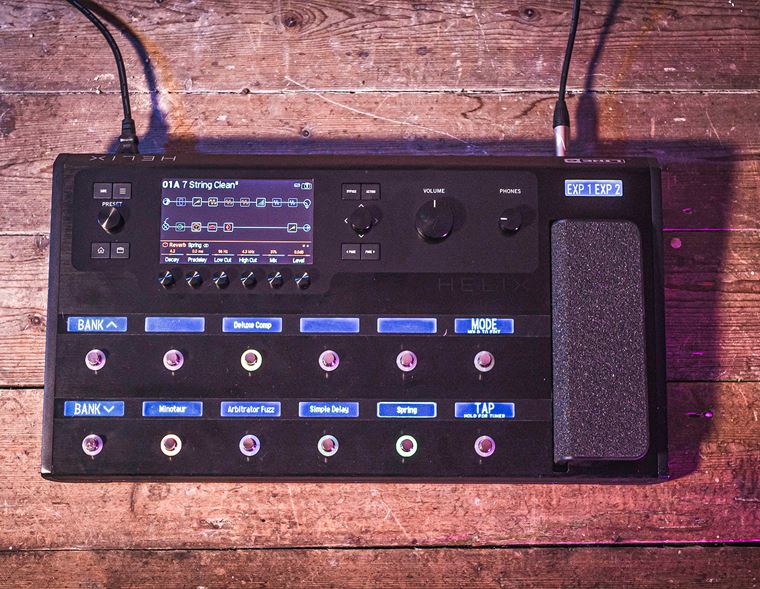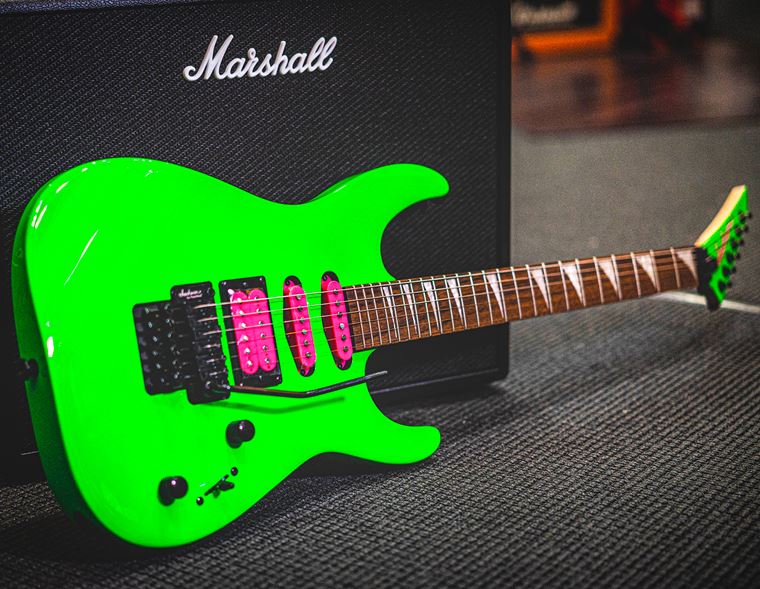What Shape is My Guitar? Our Expert Guide to Electric Guitar Shapes
What shape is your guitar? Guitars are available in a wide range of shapes, from the straightforward to the somewhat esoteric, and if you are new to this world, you may not have come across the different shapes and names. "What does an Iceman look like?" for example?
Well, today, I aim to gather together pictorial examples of every major guitar shape, along with a few not-so-major shapes, in one handy place for you to refer to. Next time somebody mentions a ‘Warlock’ or a ‘Jumbo’, you'll be able to nod your head in acknowledgement without feeling like a big ol’ fake. Sound good? I’ll start with the electric guitars and then go to acoustics.
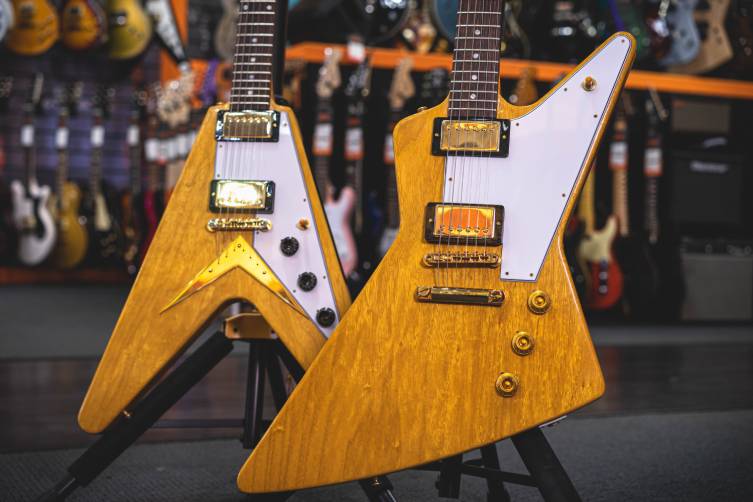
Contents
- Electric Guitar Shapes
- Stratocaster
- Superstrat
- Telecaster
- Les Paul
- SG
- Offset
- Firebird
- Double Cut/Double Cutaway
- ES Thinline Semi
- Hollowbody/Jazz Box/Archtop
- V
- RR/Randy Rhoads
- Explorer
- ML
- Iceman
- Warlock
- Mockingbird
- Where’s My Shape?
Electric Guitar Shapes
Stratocaster
This is the most obvious and general shape for an electric guitar so we’ll start here. Fender’s Stratocaster was not the first mass-produced electric guitar, but it is the one that has been far and away the most popular. It’s the most copied electric guitar design in the universe, to the point that the US Supreme Court even judged it ‘generic electric guitar’ in a copyright dispute!
The Strat, as we all call it, is well known for its double cutaway body (cutaways are the ‘horns’ at the top), curved contours and large pickguard with almost all of the electrics (pickups, knobs & switches) attached to it.
The Stratocaster is pretty much the dictionary definition of ‘electric guitar’, and though only Fender can truly make and sell a ‘Stratocaster’, loads and loads of companies create their own versions too. In industry speak, we call these guitars S-types, to avoid confusion.
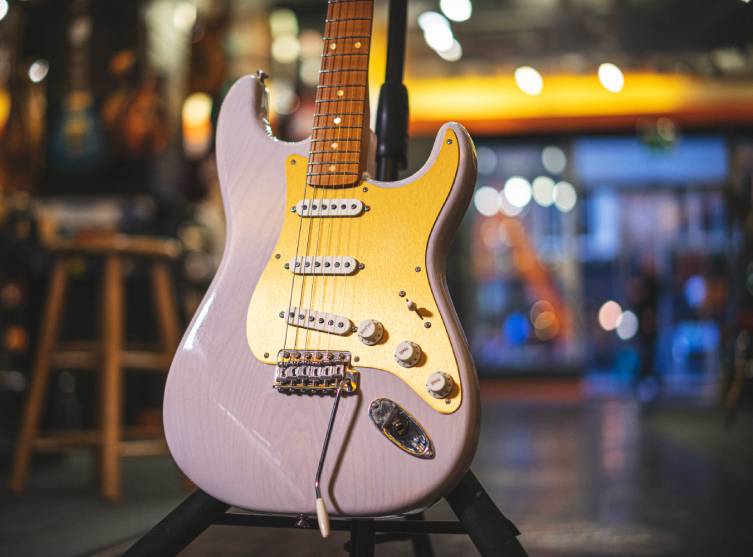
Superstrat
A superstrat often looks superficially similar to a Stratocaster. Superstrats originally were Strats that had been modified in the late 70s/early 80s to have more powerful pickups and different bridges by people like Wayne Charvel and Grover Jackson.
The Superstrat style evolved over the years, adding different headstock designs (Jackson’s ‘pointy’ headstock is a classic) and slightly sleeker/sharper cutaways. Today, you’ll see Superstrats in the form of Ibanez RG models, Charvels, Suhrs, Tylers and many more. These are often called S-types as well, but if they are sporting locking tremolo systems and powerful pickups, then it’s a Superstrat for sure!
Telecaster
The Telecaster is the first; the original; the origin of the species. This single cutaway, slab body design - no curves to speak of - was the first ever mass produced electric guitar, and it remains one of the three or four most popular designs in the world.
Telecasters - T-styles if they aren’t made by Fender - can host a wide variety of pickup variations and bridges from brand to brand, and some more modern variants include some comfort contours on the body. Even Fender themselves offer lots of choice, like Deluxe and Custom Telecasters, as well as semi-hollow models they call Thinlines. The classic look is two single coil pickups, though.
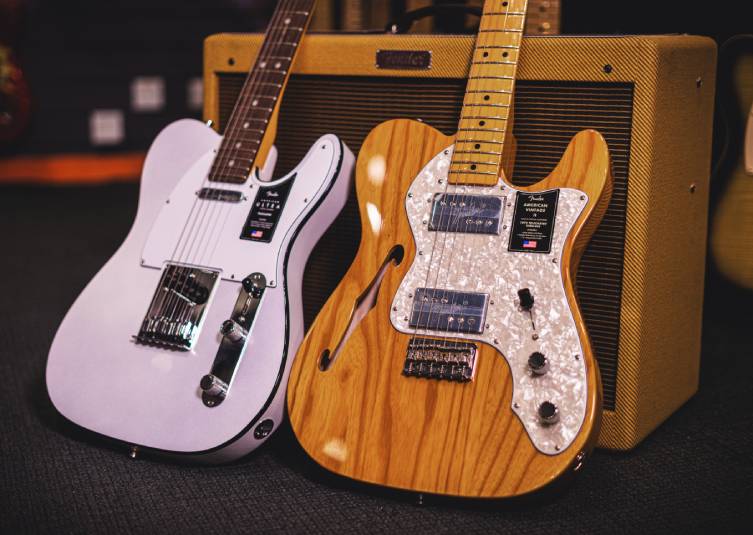
Les Paul
Les Paul was a person, and the ‘Les Paul’ is his signature model Gibson guitar. That said, almost every reference to Les Paul today will be regarding the guitar, not the guy. It’s perhaps the second most popular guitar design ever, and like the Strat, has absolutely hundreds of imitations out there, from beginner models to guitars that cost more than cars.
The general terminology for a Les Paul is an ‘LP’ or sometimes a ‘singlecut’, though that term is used for a few shapes. In reality, the Les Paul is so famous that we often refer to guitars like this as ‘Les Pauls’ whether they are made by Gibson/Epiphone or not.
Anyway, a Les Paul guitar has a thick, single cutaway body that’s carved on the top somewhat like a violin. The neck is glued in at a slightly backwards pitch, so the instrument does not sit flat if you place it on the floor. Les Pauls tend to have two pickups and four control knobs, and often (though definitely not always) have an attractive looking maple ‘top’.
Again, there are small variations, but the 1958-60 style Les Paul Standard is probably what the majority of guitarists think of when they talk about a Les Paul.

SG
The SG - it stands for Solid Guitar - is built in a similar way to the Les Paul (mahogany body, back-pitched neck and headstock) but it is noticeably thinner and has very distinctive horns that make it a double cutaway guitar.
The Gibson SG is the original blueprint, but as usual, other brands also produce SG-style guitars (the ESP Viper comes to mind), though nothing like as much as with the Les Paul, Stratocaaster and Telecaster styles. Due to the SG being famously used by Black Sabbath and AC/DC, the SG is often thought of as a hard rock guitar.
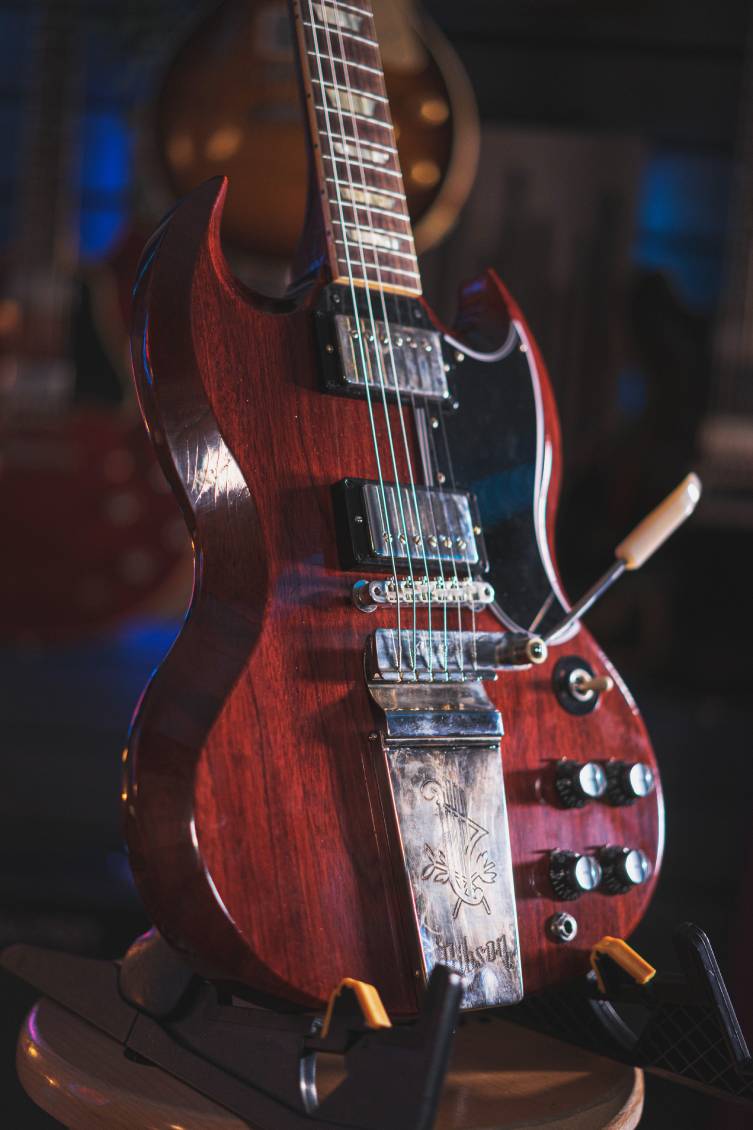
Offset
The term ‘offset’ is perhaps something of a general descriptor, since all it actually refers to is that the ‘waist’ of a guitar body is not symmetrical. The ‘offset’ angle gives guitars of this ilk - and we are talking mainly about Fender offset designs like the Jaguar, Jazzmaster, Mustang and Duo Sonic - a certain attitude and appeal.
Once seen as also-rans, recent years have seen offsets becoming almost as popular as the evergreen Strats and Teles. It’s true to say that the body shapes are actually all a little different, and certainly the hardware and other design elements all differ from offset to offset, but there is a clear style that applies to them all, and makes talking about ‘offsets’ in general more straightforward than you might expect.
For the sake of information, it’s worth knowing that the Jazzmaster is of the same scale length (size of playable string from end to end) as a Strat/Tele etc, but is altogether slightly larger. The Jaguar and Mustang - the other main offsets - have a smaller scale length and therefore feel significantly different to play. In truth, there are lots of guitar shapes that can accurately be called ‘offsets’, but these are the ones we tend to mean.
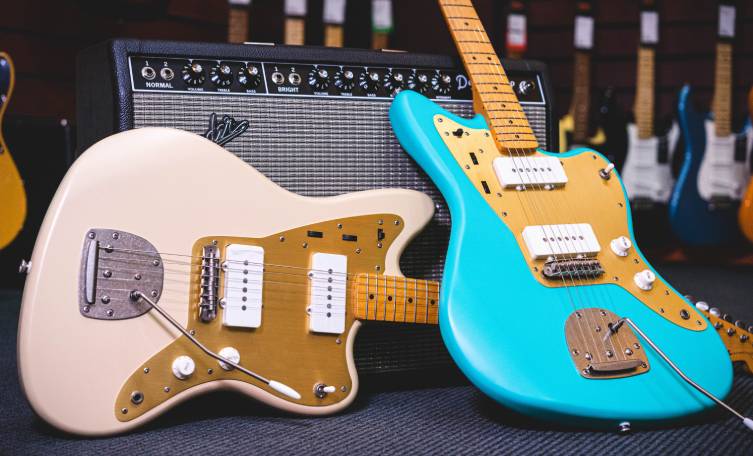
Firebird
Another type of significant offset guitar is the Gibson Firebird, though it doesn’t really share much in common with Fender’s offsets apart from the non-symmetrical waist. Firebirds are too large for normal gig bags, and have long headstocks to match their oversized bodies.
To make things more confusing, the Firebird comes in two different shapes - Reverse and Non-reverse - and both are pretty much what that sounds like, right down to the headstock being reversed as well as the curves. Firebirds are definitely easy to recognise, mainly because there’s nothing much else like them in the guitar world!
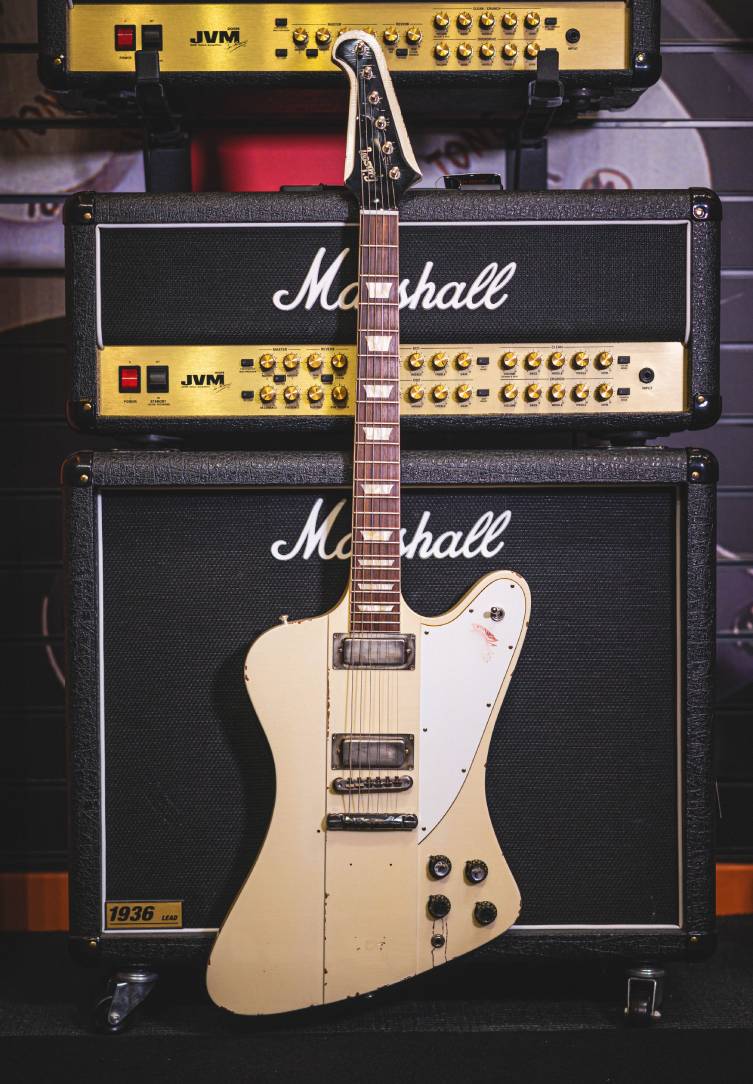
Double Cut/Double Cutaway
This one is a little more general as well. A double cut guitar is one that features two cutaway ‘horns’ in the body, as opposed to one. Now, we tend not to call a Stratocaster a double cut, even though it obviously is. This is because a Stratocaster is already so defining and iconic, so it hardly needs the explanation. No, a double cut is generally reserved for either a Gibson-style solid body with two cutaways (such as a Les Paul Junior) or a PRS style guitar such as the PRS Custom 24.
These two guitars look like they have little in common, but the fact is that early PRS models (look at early Santana models) are overwhelmingly similar in shape to a double cut Les Paul Junior. The famous PRS Custom 24 model came out of these earlier designs, so there’s actually a lot in common if you look past the fancy tops and inlays and see the shape for what it is: a Gibson outline with a touch of Fender.
Again, many brands make their own double cut guitars, but most of them are post-PRS, if you get me, so the PRS can be seen as definitive of the double-cut style, in a way.
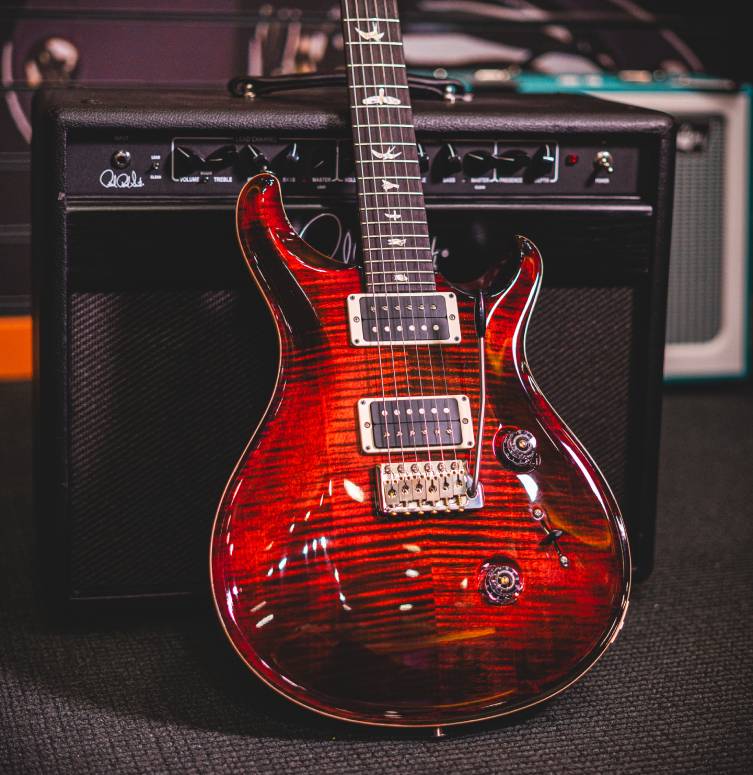
ES Thinline Semi
This style is for the large guitar with violin-like f-holes. Crucially, these are thinner in the body than Hollowbody guitars, which we’ll look at next. Generally, we call this style a ‘semi’, as it means semi-acoustic. The fact is, they are fully electric guitars with bodies that are mostly semi hollow (some exceptions are fully hollow but look the same from the outside), with the f-hole areas showing where the hollow parts are. Generally, a solid piece of timber runs up the inside middle of the body, and that’s where the pickups are installed.
Typically, these guitars are made with double cutaway body shapes and are based on the Gibson ES-335 which stands for ‘Electric Spanish’ presumably since the guitar is ultimately a Spanish instrument, and the cost of one in the fifties started at 335 dollars. The 335 (pronounced ‘three-thirty five’, though people in the UK often say ‘three three five’) is the most well known take on this design. Gibson use other numbers (345, 355 etc) to denote different models but they mostly share the same outline. Variations exist everywhere!
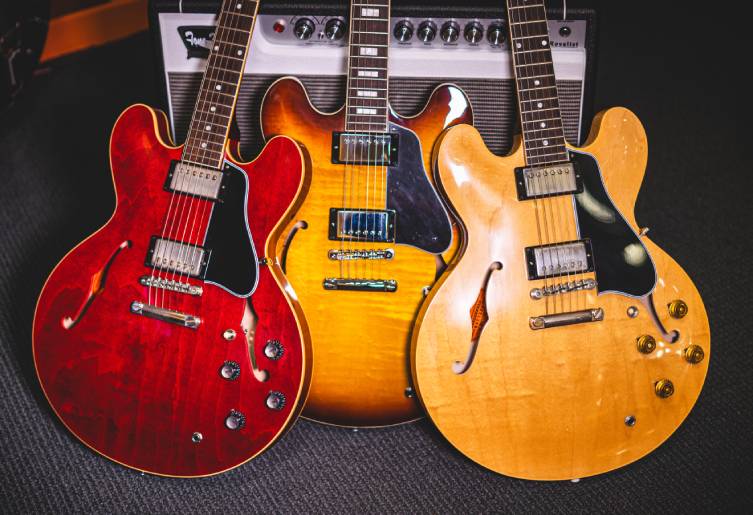
Hollowbody/Jazz Box/Archtop
Hollowbody guitars (spell it with one word or two, both ways are fine) are similar to the guitars we just looked at, except these have much deeper bodies and are pretty much always entirely hollow - no chunk of wood up the middle! The bodies themselves have arched tops (bent rather than carved, normally) as opposed to a flat top like an acoustic guitar would have, which begets them their ‘archtop’ nickname/descriptor.
Hollow body guitars are most often single cutaway in design, and tend to be decorated pretty heavily. Gibson again are frontrunners for this style, but Epiphone were the main competitors back in the 1920s, and Gretsch are perhaps the most widely used today.
Aside from Gretsch - which for cultural reasons are associated with country and rockabilly styles, hollowbody guitars are strongly associated with jazz music, hence their nicknames ‘jazzers’ and ‘jazz boxes’.
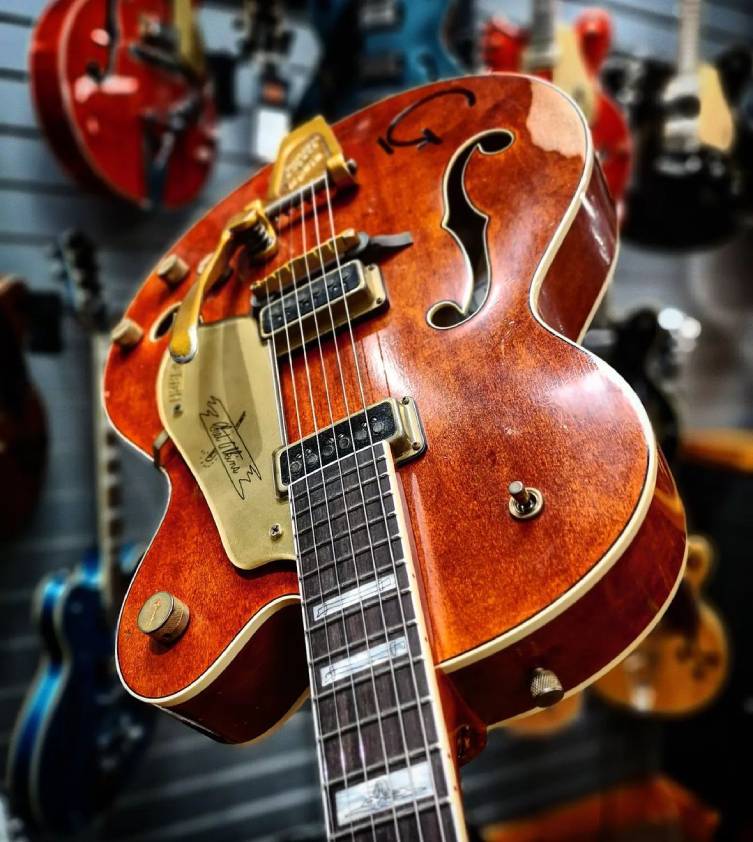
V
Gibson strike again! All V-shaped guitars (perhaps the easiest shape name to understand of them all) come from the Gibson Flying V, a bold design from the fifties that has become synonymous with the electric guitar. Indeed, when most people are asked to doodle an ‘electric guitar’, they’ll either draw a wonky looking Stratocaster or they’ll do a Flying V. It’s an iconic shape for sure, and again, one that has been widely copied over the years. Presumably, Gibson called it a ‘Flying’ V since the ‘V’ itself is side-on when it’s played? I don’t know for sure, but only Gibson and their sister brand Epiphone can make ‘Flying V’ guitars since it’s a trademark. Everyone else makes a ‘V’, and so that’s what I’m calling the shape.
The V is a symmetrical shape and the headstock design will often differ from brand to brand. Common opinion states that these guitars are difficult to sit down and play, but as a past owner of a V, I can tell you that this is not true at all: simply rest the v over your right thigh and play it like a classical player would approach their guitar. Easy!

RR/Randy Rhoads
Most variations of a theme will not be covered here since it’s normally self evident where the inspiration is from (a PRS Singlecut, for example, is obviously a Les Paul style), but this one deserves a mention.
The Randy Rhoads shape - abbreviated as RR - is a non-symmetrical take on the Flying V. It was designed by Grover Jackson and Ozzy Osbourne guitarist Randy Rhoads, and the reason it is on this list is because it has been so popular over the years, it actually gets copied all the time too, despite being something of a copy itself.
The distinctive long-and-short fins - particularly with the customary race car pinstriping and Jackson’s pointed headstock - give this guitar an identity that is distinct to the usual V copies.
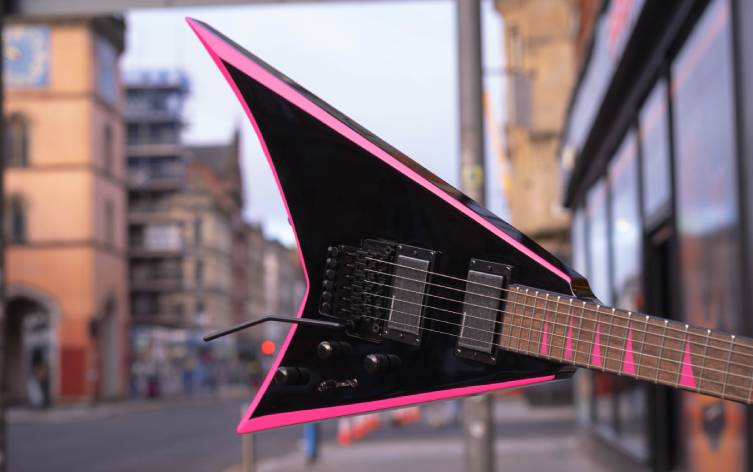
Explorer
The Explorer is yet another design by Gibson. It was released in 1958 at the same time as the Flying V as part of their Futura range, and has become an extremely recognisable ‘shape’ guitar since.
The Explorer (no idea why it’s called that) has an angular body seemingly made up of triangles. It looks like it’ll be awkward but - much like the Flying V - in reality it’s a very comfortable shape to handle and use. Explorers are only referred to as ‘explorers’ - they aren’t single cuts (strictly speaking, the cutaway area is equal on both sides of the neck) and they aren’t offsets (the waist isn’t offset, even though the body is diagonal), mainly because they are distinctive enough to have their own niche.
Again, many brands use this shape today, but all are obliged to change theirs subtly to avoid the gaze of Gibson’s lawyers. The Ibanez Destroyer was an obvious one in the 80s, as was the ESP EX, which James Hetfield probably made more famous than the original GIbson!. Even the ‘hockey stick’ headstock of the Explorer is an influential thing, being used on many 80s Superstrat brands, for example.

ML
The ML, put simply, is what you’d get if you combined a Flying V with an Explorer. It’s almost like a big ‘X’ that’s missing its arm, if you get me? Dean are the brand who invented this one in the 1970s, and you’ll have seen Dimebag Darrell favouring this style, alongside Billy Gibbons. The name ‘ML’ is a tribute to Matthew Lynn, a friend of Dean founder Dean Zelinsky. Guitars such as the Jackson Warrior and the Ibanez Xiphos could be seen to be versions of the ML, though you’d not confuse them in the heat of battle, as it were.

Iceman
The Iceman was Ibanez’s way of removing themselves from the ‘copycat’ accusations the brand endured during the 70s, mainly because their copies of Gibson designs cut a little too close to the cloth for comfort. The Iceman (again, I have no clue as to the origin of the name) was actually something of a collaboration between Ibanez (the parent company is Hoshino) and Greco, and was also called the Mirage for a while. That doesn’t explain much, but if you see a Mirage out there, know that it is the same thing!
The Iceman is a pretty unique looking guitar, and most definitely does not infringe in anybody’s trademarks! Like the Explorer, it is only ever referred to as the Iceman, not a single-cut (even though it is) or an offset (even though it is). They come and go in terms of their availability, but they are undoubtedly a classic guitar shape and it’s something of a surprise that more brands don’t copy the style.
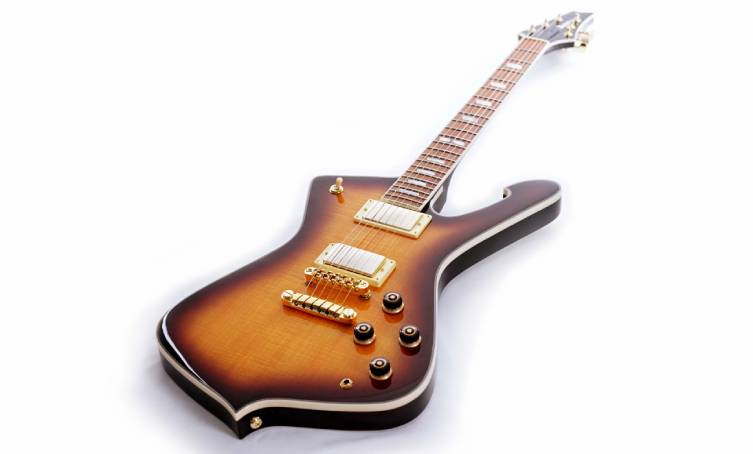
Warlock
The BC Rich Warlock is perhaps the ultimate example of a straight-up heavy metal guitar. It’s spiky, it’s distinctive, and it is very clear in its intentions.
The Warlock is perhaps best described as a haunted, gothic-looking ‘X’. The tips of each corner are sharp, and the headstock is generally either a ‘spear’ shape (6 tuners in line) or a ‘widow’ (3-a-side, spiky V shape, of course). I’d say there’ little point in trying to understand why the guitar is named ‘warlock’ and instead realise that such titles are very much part of BC Roch’s oeuvre (Warbeast, Assassin, Bich…all of these are BC Rich model names) and that they appeal directly to hard rockers and metalheads.
Each BC Rich design is pretty unique, to be honest, and though I’ve included two in this list, I’d say that the Warlock is the one that put them on the map.

Mockingbird
This is BC Rich’s other most iconic shape, thanks largely to Slash, who still frequently brings one out on stage with him. Perhaps more subtle than the Warlock, the Mockingbird (once again drawing a complete blank for the title, I’m afraid) has a very distinctive silhouette, with curved horns and an almost ‘Alembic’ still overall shape.
Like the Ibanez Iceman, there’s nothing really out there quite like it, though more companies over the years have attempted their one take on the Mockingbird than the Iceman.
Where’s My Shape?
Do you have something crazy that doesn’t fit into these broad-ish guidelines? Are you sure you can’t squeeze that Zemaitis into the Les Paul category, or that Danelectro into the double cut one? Where does Rickenbacker go? (Well, that’s easy: thinline semi, right?)
So yes, there will be guitars that are too wacky, wild and wonderful to go into this list, but I genuinely think we’ve covered almost everything here, give or take. If there’s one thing the guitar world knows about, it’s hybridisation. And even mad stuff like a Parker Fly is still pretty much a Strat in many (though definitely not all) ways.

Guitarists tend to be quite conservative in their tastes, despite how they might seem to people outside the lifestyle. This is why so many guitars are in fact easy to categorise, because demand for the old classics is always higher than the demand for modern newness. It’s just how it is! After all, did you see how many of these designs started off with Gibson? Fender are arguably second best at coming up with iconic designs, even though their Stratocaster is an easy number one in terms of popularity and worldwide recognition.
But yeah, if you have some peculiar looking guitar at home and you don’t know what it is, do let us see it! Happy strumming!








